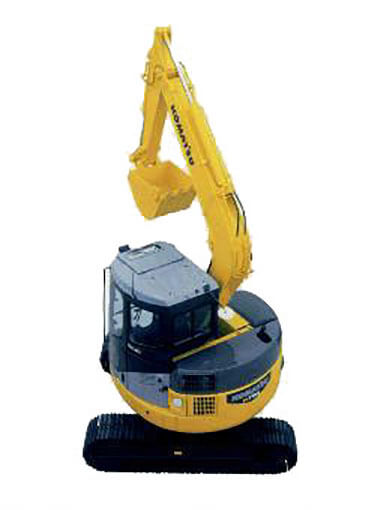2000
The IT revolution had a tremendous influence on the technology of construction equipment as well. The satellite operation management system was developed during the 90's as a method to supervise and manage equipment from a remote distance, and became an industry standard during this era.

Just as the demand for mini shovels was focused on minimal rear-swing radius type, the same trend became true for small hydraulic shovels. It is projected that small Hydraulic excavators after 15H and on will shift to the minimal rear-swing radius type.
Weight: 6850kg, Bucket capacity: 0.28m3
Hydraulic excavator
Since its first emergence in 1951, it took only 50 years for the hydraulic shovel to establish its primary position on construction sites worldwide. Its size ranges from mini to super size depending on the scale of construction, and during the half century, it kept evolving by achieving a minimum rear-swing radius and adapting styles that would work with characteristics of each site. Mirroring the movement of a human hand, a hydraulic shovel will continue to evolve during the 21st century.